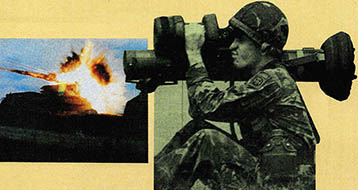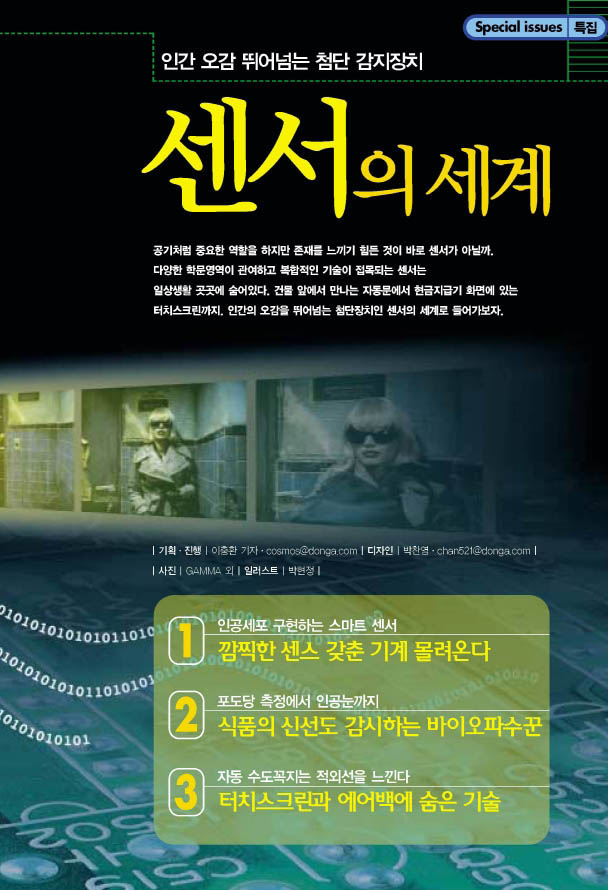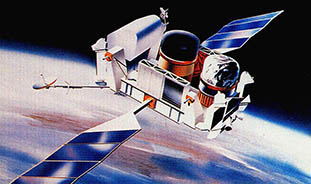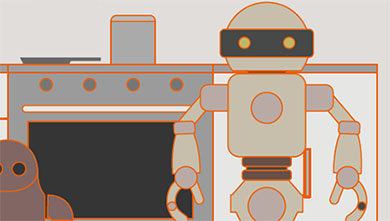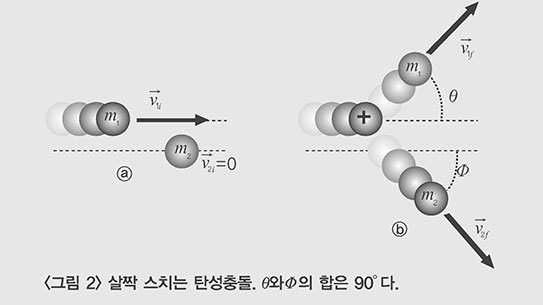20세기의 마지막 10년인 새 10년을 시작할 채비를 하면서 다가오는 10년동안에 과학에서 우리가 무엇을 할 것인지 생각해 보는 것은 값있는 일이다.
우리가 이것을 확실히 답할 수 없음은 당연하다. 예측을 논리적 합리적으로 하는데도 불구하고 미래의 발전은 우리의 이해를 빠져 나가는 수가 있기 때문이다. 하지만 지성적인 예언을 좀 해보자.
과학의 진보는 크게 과거의 발전에 기초하고 있다. 1980년대의 가장 큰 과학적 사건의 하나는 1987년 2월 대마젤란성운(은하)에서 일어난 초신성의 폭발이었다. 이런 일이 1990년대에 되풀이되게 할 수는 없으나 1987년의 초신성은 첫 신호로 중성미자의 폭발을 일으켰는데 그것은 이런 드문 입자를 검출하는 기구로 잡았다.
1990년대에는 더 많고 더 좋은 중성미자망원경을 만들어 먼지구름 때문에 광학적으로 숨더라도 초신성을 잡을 수 있도록 할 것이 확실한 듯하다.
또한 보이저 2호가 1980년대에 천왕성과 해왕성을 보여 주었는가 하면 지오토는 핼리혜성에 관한 정보를 보내 왔다. 1990년대는 갈릴레오의 시대가 될 것인데 그것은 목성의 대기에 탐사기를 보내 그 어느 때보다 더 자세히 연구할 것이다.
80년대에는 셔틀계획이 1986년의 챌린저 참사 때문에 활동중지 상태로 들어갔다가 말기에 가서 힘들여 제 궤도로 돌아갔다. 90년대에는(정치와 경제가 비용을 허용한다면) 우리는 달에 영주하고 공간에 여러가지 구조를 건설하기 위한 기지 구실을 할 정교한 우주정거장을 건설, 참된 우주공간 속의 인류시대가 시작될 것이다.
지구에 더 가까이서는 1987년에 비교적 고온의 초전도라는 흥분을 경험했다. 이것은 실험실의 호기심으로 남아 있다. 왜냐하면 새 초전도물질에서 줄과 막을 만들기가 어렵고 초전도를 설명할 이론이 없어 믿음직하게 작동하는 초전도물질을 생산할 수 없기 때문이다. 1990년대에는 이런 문제들이 상세히 연구될 것이고 끝에 가서는 고온 초전도의 참된 응용이 눈에 보이게 될지 모른다.
1989년 초에는 상온핵융합을 둘러싸고 잠시 열광이 있었다. 거기에는 실질적 에너지원으로서 아무 것도 없는 듯 하지만 그 현상을 더 연구하면 재미있고 가치있는 것으로 판명될 수 있는 전기화학의 특이한 면이 밝혀질지도 모른다. 그러나 아직도 그 측면이 무엇인지 짐작할 길은 없다.
더욱이 상온핵융합에 의한 막대한 에너지원이라는 순간적인 희망은 분명히 고온핵융합을 이루기 위한 노력을 가속화할 것이다. 과학자들은 40년 동안 그것을 추구했고 더욱 가까이 왔다. 1990년대는 통제된 고온핵융합이 성공을 볼지도 모른다.
수십년 동안 통신술은 세련되어 왔다. 점차 구리전선은 훨씬 더 싸고 더 많은 정보를 전할 수 있는 광섬유로 대체되어 왔다.
컴퓨터는 더욱 크게 발전했다. 1990년대에 우리는 광섬유에 의해 전산화된 도서관과 연결된 발전된 컴퓨터를 집에서 볼 수 있을 것이다. 우리는 상호작용하는 텔레비전의 시작을 볼지 모르는 데 거기서 오락의 기회는 넓어지고 개별화될 것이다. 예컨대 사람들은 이야기가 택하는 방향을 결정할 수 있을 것이다.
게다가 오락의 정의 자체가 바뀔 수도 있다. 세계에 관한 지식을 마음대로 선택함으로써 사람들은 호기심과 학문의 참된 즐거움을 발견할 수 있을 것이다. 교육은 큰 기관에서 단지 교과과정을 따라가는 방식이 아닐 것이다. 그것은 끝없이 참을성있고 거의 모든 것을 아는 발전된 컴퓨터의 도움으로 집에서 자기 시간에 자기 식으로 하는 정말 흥미로운 추구일 것이다. 1990년대에는 창조성의 새벽이 세계를 둘러싸기 시작할 것이다.
물론 미래의 과학의 발전에 대한 참된 관심은 '돌파', 곧 아무데서도 오지 않았고 어떤 분야의 과학을 뒤죽박죽으로 만드는 갑작스런 발견에 있다. 1948년의 트랜지스터 발명이 이런 돌파다.
그러나 돌파는 정의상 예측될 수 없다. 돌파를 예측할 수 있다면 돌파가 아니라 자연적인 발전일 뿐이다. 1990년대에는 어떤 종류의 돌파가 멋있을 것인가? 과학자들은 인간의 게놈, 곧 모든 인간유전자의 상세한 분석을 하고 있다. 아마도 이런 방법으로 그들은 지금은 아무도 꿈꿀 수 없는 것을 배울 것이다.
또한 우리는 뇌의 상세한 작용에 대해 거의 아무 것도 모른다. 이 문제에 대해 참된 통찰을 얻을 수 있다면 그것은 얼마나 중요하고 얼마나 멋질까. 그러나 어떤 것도 분명하지 않다. 예컨대 만일 우리가 근시안적으로 환경을 잘못 다뤄 지구의 파괴를 계속한다면 그것은 모두 실패할 것이다. 그렇게 하지는 말자.
As We get ready to start a new decade, the last decade of the 20th century, it is valuable to ponder what we will be doing in science during the coming 10 years.
Naturally, we cannot answer this with any certainty, for future developments have a way of slithering out of one's grasp, despite predictions made with logic and rationality. Still, let's make some intelligent guesses.
Advances in science are to a great extent based on what went before. Thus, one of the great scientific events of the 1980s was the explosion of a supernova in the Large Magellanic Cloud in February 1987. We can't arrange to have a repeat of such an event in the 1990s, but the 1987 supernova had as its first signal a burst of neutrinos, which were picked up by a device designed to detect these rare particles.
It seems certain that the 1990s will see attempts to build more and better "neutrino telescopes" so that we can spot supernovas as they occur even when they are hidden form optical view by dust clouds.
Then, too, Voyager 2 showed us Uranus and Neptune in the 1980s, while Giotto sent back information on Halley's Comet. The 1990s will be the decade of Galileo, which will study Jupiter in greater detail than ever before, sending a probe into its atmosphere.
The '80s saw the shuttle program blasted into inactivity by the Challenger disaster in 1986 and then laboriously go back on track toward the end of the decade. In the '90s(provided politics and economics permit the expense), we will be building a rather elaborate space station to serve as a base for a permanent settlemet on the Moon and for the building of a variety of structures in space, so that the true humanity-in-space age will begin.
Closer to home, 1987 saw the excitement of comparatively high-temperature superconductivity. This remains a laboratory curiosity, because it is difficult to make wires and films out of the new superconductive substances and because we have no theory to explain superconductivity, so we can't manufacture superconductive materials that work reliably. In the 1990s, these problems will have to be attacked in detail, and by the end of the decade, true applications of high-temperature superconductivity may be in sight.
There was a brief furor over cold fusion, in early 1989. There seems to be thing to it as a practical source of energy, but it may well be that further investigation of the phenomenon will uncover unusual facets of electrochemistry that may prove interesting and valuable-but as yet, there is no way of guessing what those facets may be..
What's more, the momentary hope of a great energy source through cold fusion is sure to accelerate efforts to achieve hot fusion. Scientists have been on the track of that for 40 years, and they've been getting closer. The 1990s may see controlled hot fusion achieved.
For decades, the arts of communication have been sharpened. Increasingly, copper wire has been replaced by optical fiber, far cheaper and capable of transmitting far more information. Computers have become much more advanced.
In the 1990s, we may see advanced computers in the home, connected by optical fibers to computerized libraries. We may see the beginnings of interactive television, in which the opportunities for amusement will be widened and individualized. People could choose the direction a story may take, for instance.
What's more, the very definition of amusement may change. With the knowledge of the world at one's fingertips, people may discover the true pleasure of curiosity and learning. Education will not be merely the following of a curriculum in a large institution, but the pursuit of something that truly interests you at home-in your own time, in your own way, with the help of an advanced computer that is endlessly patient and knows almost everything. A new dawn of creativity may begin to envelop the world in the 1990s.
Of course, the true interest in future developments of science lies in the "breakthroughs"-sudden discoveries that seem to come out of nowhere and that turn some branch of science topsy-turvy. The invention of the transistor in 1948 was such a breakthrough. However, breakthroughs, by definition, can't be predicted. If they could, they would not be breakthroughs, but merely natural developments. What kind of breakthroughs might be nice in the 1990s? Scientists are working on the human genome, the analysis in detail of all the human genes. Perhaps in this way they will learn something that no one can now dream of.
Then, too, we know virtually nothing of the detailed working of the brain. How important that is, and how wonderful if some true insight could be gained into the matter.
But none of this is certain. It will all fail, for instance, if we continue to destroy the Earth through short-sighted mistreatment of the environment. Let's not do that.
(C) 1989, Los Angeles Times Syndicate.
이 기사의 내용이 궁금하신가요?
기사 전문을 보시려면500(500원)이 필요합니다.
1990년 03월 과학동아 정보
🎓️ 진로 추천
- 천문학
- 물리학
- 컴퓨터공학
1990년 03월 과학동아 다른추천기사









